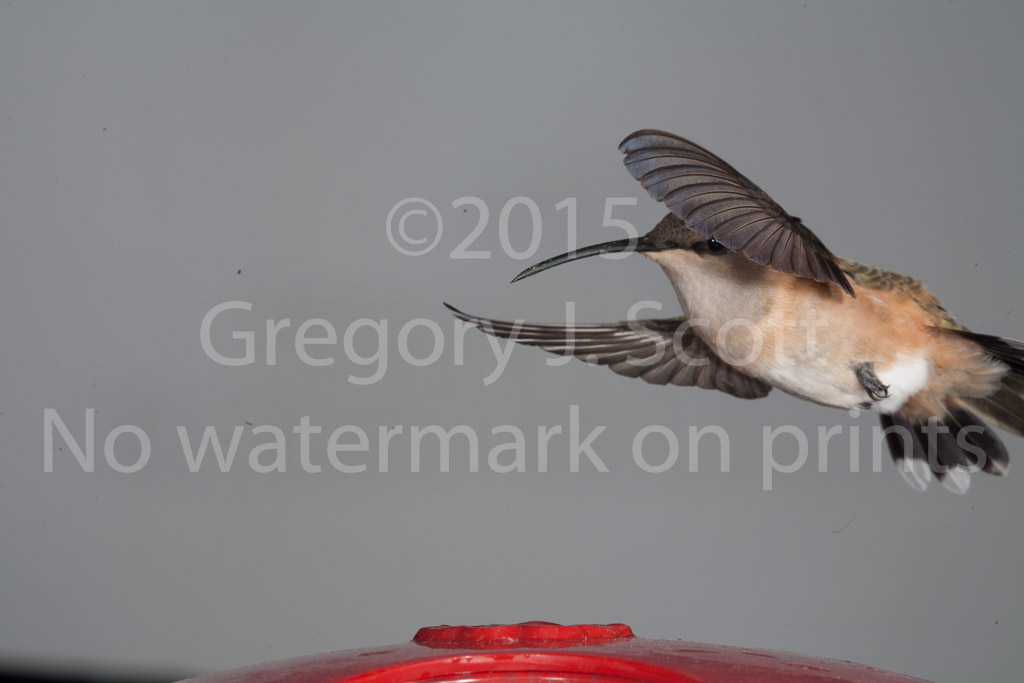One Hour of Unedited Hummingbird Photography: Technique and Methods
Click the large image once to see it larger, and click yet again to see it at FULL resolution! But don't forget to read the caption UNDER is page to get all the technical info.
File Naming conventions in my archive

I manually export my images to my computer using a relatively sophisticated batch file. The file name for this image is 20090422_2038_100_6479.cr2 This file name indicates the following: the shot was taken year 2009 Month 04 Day 22 time 20:30 (24 hr). the original subdirectory was 100, and the file was number 6479 in the camera's sequential numbering. CR2 indicates that this is the raw file, which has greater color depth than a JPG, and is UNEDITED. Think of this as the digital analog of the negative in my archive. It's never altered, and with the use of a directory in my archive for each day, in format YYYYMMDD, and the date time and image number, the odds are virtually nonexistant that one original image will overwrite another. I find it easy to find images in this chronological file name order, particularly in combination with the keywords I enter on the best shots. In this shot, not the perfect focus and totally stopped motion on the wing toward the camera. The velocity of the wingtip is, of course, a minimum at the extreme ends of each wing stroke, and when you happened to trigger the flash at this point in the motion, the shots can be incredibally sharp overall. Focusing farther back and using f22 would have made this shot much better, and it would for many of the shots in this series.